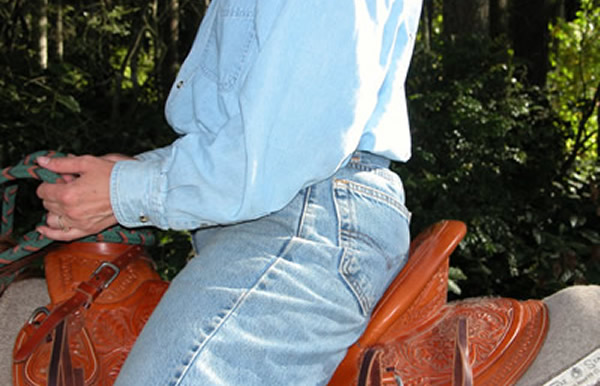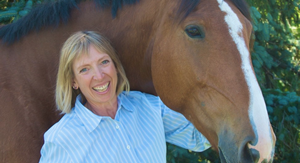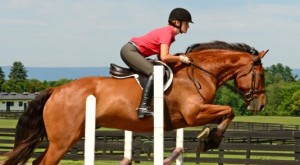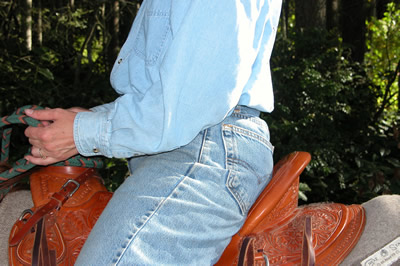
Does your horse pull you out of the saddle? Do you fall forward or back when jumping over the fence? Does your horse travel with his head in the air? Regardless of whether you ride western, English or soft-gaited horses here’s a quick tip to help improve your riding.
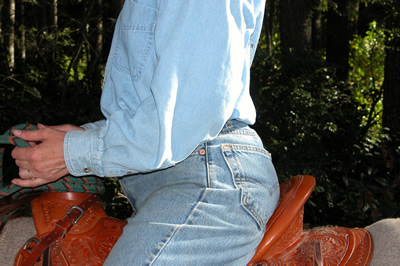
You can increase or decrease the amount of lumbar curve by arching or rounding your back. When you arch (extend) your back, the extensor muscles (the muscles you feel on each side of your spine) increasingly contract. When you round (flex) your back the muscles on the inside of your spine (flexors) contract. You cannot feel the flexor muscles because they lie on the inside of the spine behind your internal organs. In a cow, the flexor muscles (psoas major and minor) are what we enjoy as filet mignon. When your back feels flat the lumbar spine is stabilized using both flexor and extensor muscles.
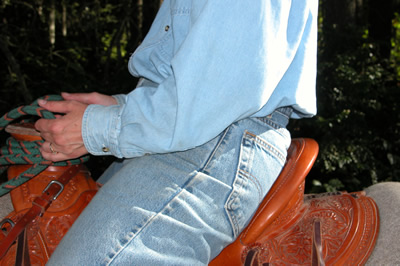
The lumbar portion of the horse’s spine is the area behind your saddle between the last rib and the croup. Most horses have 6 lumbar vertebrae, although some Arabs only have 5. The horse’s lumbar spine is slightly rounded and has the ability to flex (round) and extend (hollow) using the same flexor and extensor muscles.
The horse needs to be able to round his lower back in order to engage his hindquarters. Pressure on the lumbar area will cause the horse to hollow or drop his lower back. This may be caused by many things most commonly a poor fitting saddle, a poorly placed saddle, a rider sitting in a hollow position and/or a rider sitting too far back in the saddle.
To find a solid flat lower back position while sitting on or off your horse, gently arch and round your back. If mounted, you may need to sit in the middle of your saddle before you begin. Make very small, slow, movements so that you can sense and feel the changes. Do your back and abdominal muscles change shape, texture and tone as you move? Be careful. A little movement can feel good but you could make yourself sore if you do too much.
When you use your psoas muscles to align the pelvis you can support your position without excessively tightening your back or abdomen. Find the place where your back feels flat and solid without tensing your abdominal muscles. Notice how this affects the freedom of your hips.
Use this Murdoch Minute as a ‘body position self-check’. A solid back is especially important when jumping. While working over ground poles you can place your hand on your back (on a quiet, safe horse) to feel if your back is flat. Regardless of your discipline hopefully you will find with a flat back that you are more secure with less effort. In another Minute you see how to use your new back position to stop pulling back on the reins. And remember – enjoy the ride!

